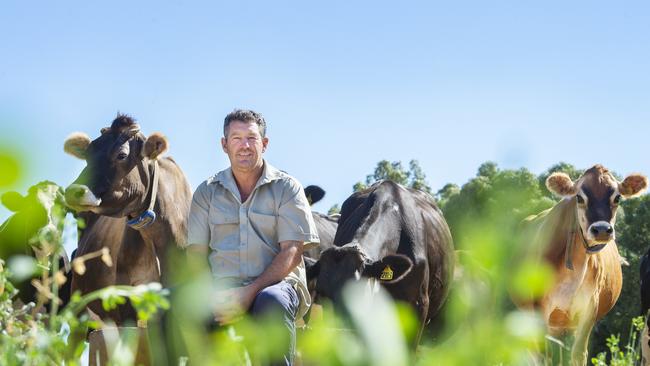Victorian Dairy Farm Monitor: Goulburn Valley’s bumper 2023
New herd and profit figures for dairy farmers, by regions, have been released, and northern Victoria has an unusual trajectory.
Northern Victoria topped the dairy pops last season with the average farmgate price coming within striking distance of $10 per kilo milk solids.
That’s the verdict of a regional breakdown of Victoria’s Dairy Farm Monitor Project, which found northern dairy districts performed better than their southern counterparts across the 2023-24 financial year.
Data collated by the joint Dairy Australia-Agriculture Victoria initiative found the average herd size among surveyed northern Victorian farmers was 489 cows in 2023-24, up 12 per cent from the previous financial year.
The average farmgate milk price for northern Victoria was $9.93/kg milk solids in 2023-24, ahead of southwest Victoria on $9.59/kg milk solids and Gippsland on $9.34/kg milk solids.
Of that $9.93/kg figure, total feed costs took away $4.53/kg milk solids while overhead costs took a further $2.86/kg milk solids.
Cohuna farmer John Keely said 2023-24 was a solid financial year for most dairy regions, although northern Victoria fared better than most.

He said the 2023-24 were in stark contrast to conditions in 2024-25, with lower farmgate returns and incipient drought conditions.
“Apart from summer rain over Christmas and the new year, 2023-24 was a good season,” Mr Keely said.
“High farmgate prices also helped with confidence in the wider industry — farmers were reinvesting in their farms and the dairy towns were doing well.
“That’s in stark contrast to the current farmgate prices. Farmers are investing in their farms and that has a knock-on effect on the small businesses in town.”
Murrabit farmer Andrew Leahy said his district, about 50km southeast of Swan Hill, enjoyed a better 2023-24 compared to the first four months of this financial year.
“Yes, 23-24 was a good season but a good part of that for many in northern Victoria was the clean-up from the floods,” he said.
“We were still recovering from October 2022 on our farm, like a lot of others.
“One-third of our farm was underwater, so it was good in the following financial year to have that strong farmgate price.
“Now we have a farmgate price that’s really keeping things flat for the wider industry. In a way, you get a clearer picture of how good a financial year it was when it’s followed by a bad season, or bad financial year.”
Compared to the northern Victoria average herd of 489 cows, monitored farms in southwest Victoria had a smaller average herd size of 406 cows, up 6 per cent on the previous financial year.
Examining the southwest’s average farmgate milk price of $9.59/kg milk solids, the total feed cost takeaway was $4.24/kg milk solids while further overhead costs amounted to $3.12/kg milk solids on average.
Monitored farms in Gippsland had an average herd size of 339 cows in 2023-24, with milk solids sold up five per cent on the previous survey to sit at 506kg milk solids per cow.
Of Gippsland’s average farmgate milk price of $9.34/kg milk solids, total feed costs consumed $3.81/kg milk solids while overhead costs eroded $2.93/kg milk solids on average.
Agriculture Victoria farm business economist manager Claire Waterman said monitored farm profits in 2023-24 were above the 18-year project average for the fifth consecutive year.
She said interest rate rises across the 2023-24 financial year were noted by surveyed farmers.
“Southwest Victorian participants used their fodder reserves to manage dry conditions, while an increase in feed inventory in Northern Victoria and Gippsland reduced costs in these regions,” Ms Waterman said.
“Interest and lease costs rose, driven by larger borrowings and rising interest rates, putting additional pressure on farm finances.
Ms Waterman said farmer participants were selected for the project to represent a distribution of farm size, feeding system, herd size and geographical location within each region.
The long-running project drew criticism this year from industry leaders, concerned that robust figures were not representative of many younger and drought-stricken farmers struggling to make ends meet.
Last week, Australian Dairy Farmers president Ben Bennett warned processors not to use the 2023-24 survey as an excuse to keep the farmgate artificially low.
“The farms selected do not fully represent the entire dairy farm population as the participant farms were not solely chosen on the basis of providing a representative sample,” Ms Waterman said.
“Monitoring farm businesses over time shows the trends in performance and allows us to examine the influences on farm profitability and the impact of different issues facing farmers.”





